AT&T is being ousted from the Dow Jones industrial average in favor of Apple.
AT&T is but a shadow of its former self. It once was the corporate home of the long-distance service used by virtually all home telephone subscribers, as well as the corporate umbrella for the regional Baby Bells subsidiaries that provided local telephone service to more than 90 percent of the country.
There was no competition to speak of. Innovation was slow to nonexistent. The monopoly was approved and enforced by the FCC (under the same authority they used to assert internet jurisdiction last week) in return for supposed low consumer cost, reliability and the promise of universal service. Very smart Washington lawyers and armies of accountants and engineers who worked for the conglomerate and its affiliates, insisted the monopoly and its cross subsidies were necessary if AT&T was to have the scale, technical inter-operability and financial wherewithal to support seamless, reliable and nondiscriminatory universal service. If you were an economist, you could make a small fortune building models and engaging in argument that telephone service was a natural monopoly. If you were a consumer in need of a telephone handset, you could get it anywhere you wanted so long as it was leased and it was manufactured by Western Electric, another Bell subsidiary
After the FCC had implemented a series of meek reforms, the Reagan administration Justice Department said nuts to all that and stepped up to rip apart that AT&T in 1984, which opened up telecommunication markets to competition and invited quantum leaps in innovation. Settlement of the antitrust action further eliminated artificial barriers between computer and telecommunication services, facilitating the development of the enormous tech sector we have today.
If the FCC of old had its way and the AT&T still existed in its historic form, we would probably still be communicating largely via fax machines. Legions of lawyers and lobbyists would be arguing whether the regulators should permit AT&T to introduce text messaging as a value added, separately metered service, to its installed customer pager base (if you don't know what a pager is, ask mom or dad). Cell phones? Only for the elite if they were out there at all.
AT&T joined the Dow Jones industrial stock index on October 4, 1916. There were twenty stocks in the index then (thirty now). Eight of the twenty firms had "American" or "United States" in their titles. With the departure of AT&T announced today, American Express is the sole remaining firm whose name has a domestic flavor.
AT&T was a giant. A big part of the 20th century history of this country is a history of how AT&T got to be what it was. AT&T knitted the nation together. It drove enormous commercial growth and facilitated the country's industrialization. The firm bridged the gap from the telegraph to the internet. All that success blinded many to the possibilities that existed beyond AT&T.
Which would lead to us winding up this post except that we have been doing some research.
In that vein, we present a look at a businessman and manager, cum engineer who was an AT&T pioneer. We identified him in a current project where we are looking into the early history of a country club, founded in 1897, where we caddied from 1964 to 1972. Glen View Club had an impressive lineup of early members whose callings and careers are reflection of a time in this country and its history much bigger than themselves.
Today we introduce Angus S. Hibbard
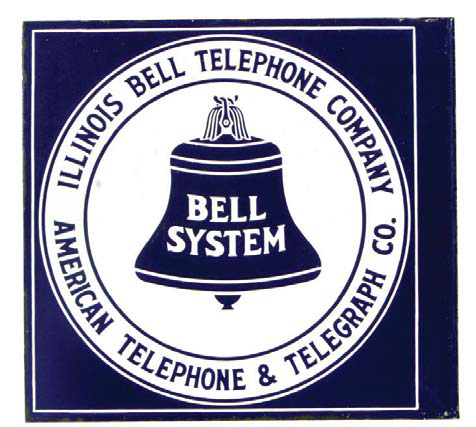 |
| Illinois Bell adaptation of the Bell logo. |
While strolling down New York’s lower Broadway during 1888, Angus Hibbard observed that trade signs painted blue and white seemed to stand out the best. At the time Angus Hibbard was the general superintendent for American Telephone and Telegraph Company (AT&T) then referred to as the Long Distance Company. AT&T was established during 1885 as an American Bell Telephone Company subsidiary. Its purpose was to connect distant cities with long distance lines.
Three years had gone by since AT&T’s founding and public pay phones were becoming more widespread. But the company had no standardized signing for marking long distance payphone locations. Having noticed signs painted blue and white attracted the eye, Angus had a thought. Many vendors and stores at the time advertised their wares or services by displaying large symbolic examples above the sidewalk. Why not symbolize Bell telephone service using the outline of a bell?
Advertising is often related to the American consciousness through subliminal cultural themes. The Bell interests released its first telephone advertisement in May 1877 referring to Prof. Bell’s “Speaking and Singing Telephone.” An image of The Liberty Bell came to Angus’ mind coinciding with The American Bell Telephone Company named for the Bell patents and Alexander Graham Bell. Angus Hibbard set to work sketching renditions of an appropriate advertising sign. His first attempt included adopting the Liberty Bell shape in blue and attaching a set of wings indicating the flight or speed of modern telephone transmission. On the bell he included the words in white “LONG DISTANCE TELEPHONE.” The bell was set on a white background and Angus showed his sketch to Theodore Vail, then president of AT&T.
The wings were dropped. The simple bell logo adopted soon thereafter was plastered on telephone booths everywhere and became emblematic of AT&T and the Bell System. The logo in various forms was used from 1889 into the 1990s (by some of the baby bells). At its peak the logo achieved 93 percent recognition from the American public, similar to the percentage of households that were wired in the Ma Bell era for telephone service.
Mr. Hibbard described the development and adoption of the logo in his own words.
Tramping lower Broadway, studying signs of many kinds, I had come to believe that the best color scheme for such a sign would be blue on white, with plenty of blue. Alone in my office with the samples at hand, I took a large pad of paper and tried to study the question from the bottom up. We wanted a sign for Alexander Graham Bell's telephone. With that as the fundamental I sketched on the paper the outline of a bell. To the next question, "What kind of telephone are we to advertise?" there was but one answer, the long distance telephone. And so I printed within the outline of the bell the words "Long Distance Telephone." This looked good to me and, deciding to follow the color scheme described, I had a blueprint made from the drawing and discussed it with my associates. They liked it. The original sketch and blueprint were approved by Edward J. Hall, Jr., general manager of the company, my superior officer, on January 5, 1889, together with the words "Standard Bell, use no other form." So was born the Blue Bell of the telephone.
Angus Hibbard's mid-career, 1895 bio was as follows.
ANGUS S. HIBBARD is one of the leading telephone men of the country. At the head of a company possessing an exchange doing a larger business than any other in the United States, he is a recognized authority on all questions pertaining to this branch of the electrical industry. Mr. Hibbard was born in Milwaukee on February 7, 1860, and was educated in the Milwaukee Academy and Racine College. In 1878 he was chief clerk to the general superintendent of the Northwestern Telegraph company, who, as agent of the Bell Telephone company, began the introduction of telephones in Wisconsin. In this connection young Hibbard went into telephone work exclusively in 1881 as superintendent for Wisconsin, and built 54 exchanges and 2,800 miles of toll line in that state. In 1886 Mr. Hibbard went to New York as general superintendent of the American Telephone & Telegraph company and opened the New York and Philadelphia lines of that company for the first long-distance business. He continued in charge of that company's lines in its extensions throughout the eastern and central states, and opened the New York-Chicago line for business in October, 1892. He came to Chicago February 1, 1893, as general manager of the Chicago Telephone company, since which time that company's exchange has advanced to first place in the country, having 11,000 subscribers, and its traffic has grown to the handling of over 250,000 messages per day.
New Officers of the Institute. — Angus S. Hibbard, Vice-President.
vol. 16, no. 21, p. 251-252, col. 2-3,1-3
|

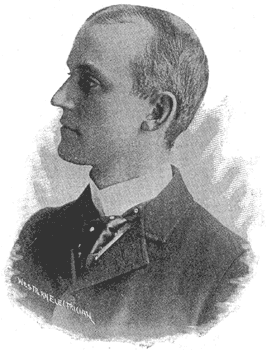
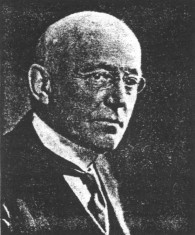
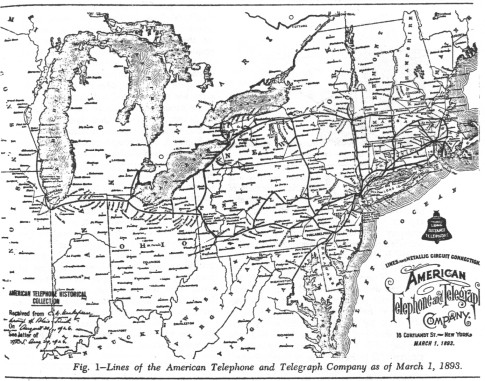
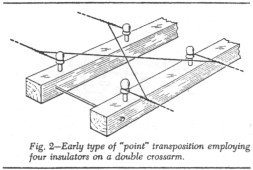
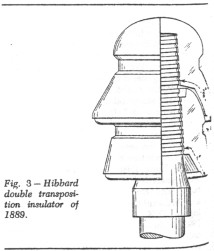
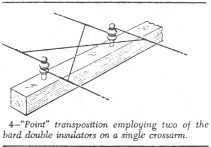




No comments:
Post a Comment